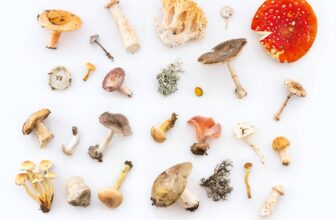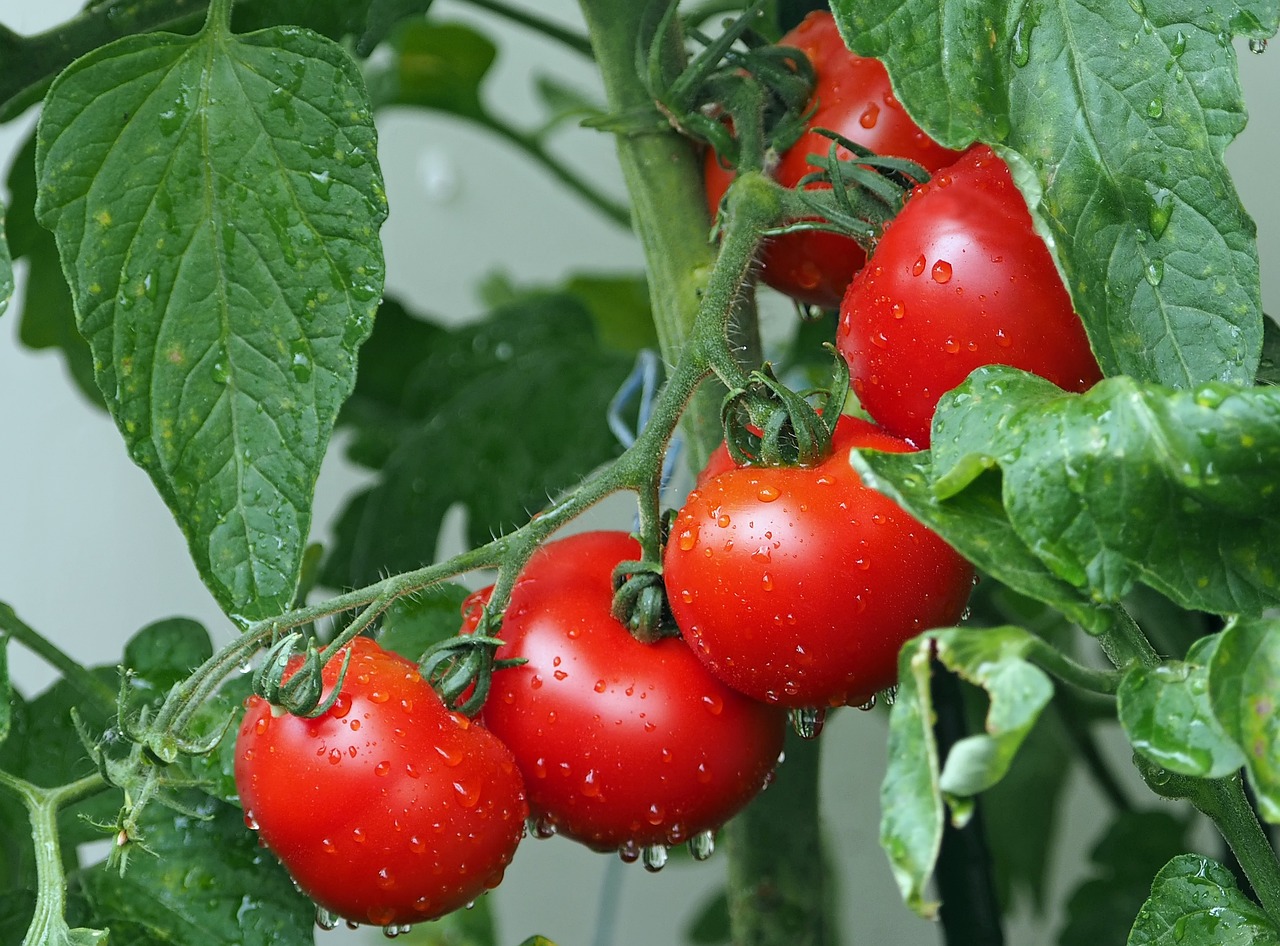
Table of Content
Tomatoes are fruits but are considered a vegetable by nutritionists. The plants are very attractive with the fruits hanging on them. The very first choice would be a tomato plant for those who plan to have a vegetation garden.
Tomato lovers would also love to grow their own fresh juicy, chemical-free tomatoes fresh from their gardens. The trick to growing the tastiest tomatoes is in choosing the best varieties and growing them with proper care. Here’s what you need to know to start growing your own healthy tomatoes at home.
Tomato Varieties
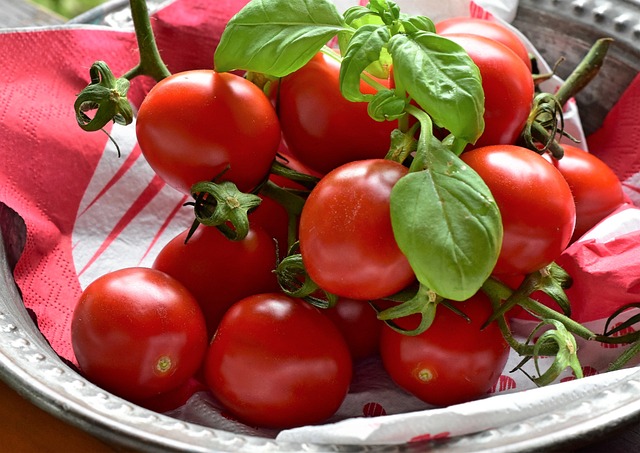
The botanical name given for tomatoes is Solanum Lycopersicum L. It is part of the Solanaceae family. Native to Mexico, western South America, and Central America. Tomatoes are used as fruits and vegetables. It is grown and harvested in many parts of the world. Tomatoes are classified into 2 main types.
Determinate tomatoes grow in a bush form to a height of 2 to 3 feet. This type produces many ripe tomatoes at a time. When they grow fruits they reduce the leaf growth for some time and focus on fruit development.
They produce fruits earlier than the other type. This set of plants does not need the help of staking or caging. This can also be grown in containers and a small space. These tomatoes are used in the making of sauce and canning. These tomatoes are good for canning as they are produced in large numbers at the same time.
Indeterminate tomatoes grow vining. This tomato type produces the largest tomatoes throughout summer and until the first frost. They have more leaf growth making them produce evenly throughout the season.
These plants need the help of staking and cages. They are normally grown in large gardens as they take up more space. The large-sized tomatoes called beefsteak tomatoes and cherry tomatoes come under the indeterminate variety.
Waiting for the Right Time
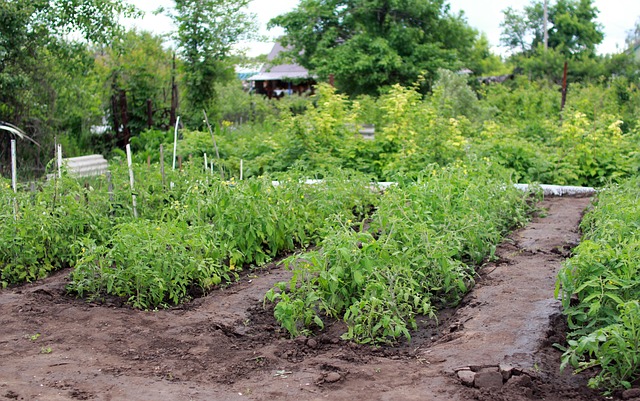
Tomato plants are grown in warm regions or during a warm climate. They are warm-season crops that love the warmth got from the sun and do not like or cannot resist the frost. Tomatoes take almost 60 to 100 days for harvesting, depending on the type of tomatoes we grow.
In regions that are always warm with the sun present throughout the year, there is not much of an issue growing tomato plants as planting can be done at any time during the year. In these hot regions, seeds are sown into the garden soil to grow directly into mature plants.
The tomato plants take quite a long time for their growth phase making the planting date to get delayed, therefore the gardeners living in the cold regions grow their starter plants from seeds letting them germinate indoors or get transplants directly from nurseries. Instead of waiting till the spring, they start to get ready with the starter plants at the end of winter.
Once it becomes spring they wait till the climate gets warm and also wait till the soil is warmed up properly for the plants to be planted safely. Doing it this way the harvesting of tomatoes can be done on time before the cold season begins.
Getting Ready for Planting
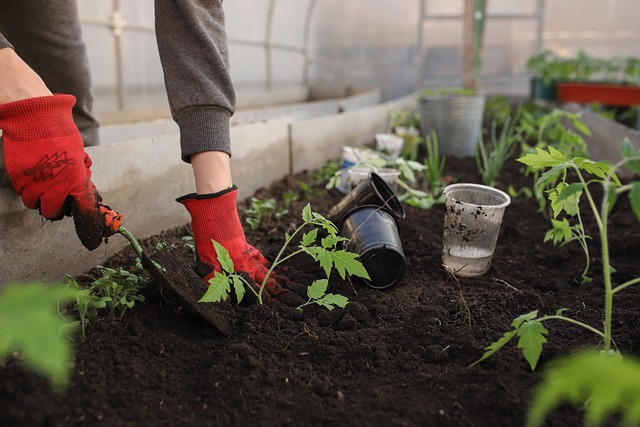
Now that you are ready with the starter plants you can go ahead starting to work on the requirements for planting the starter plants.
Location
Find a place with adequate light got from the sun. If the chosen site is in the northern region, the plant prefers 8 to 10 hours of sunlight whereas if the chosen site is in the southern region the light from the afternoon shade will help the tomato plants survive and thrive.
Soil and Fertilizers
Make sure the chosen site was not used for growing tomatoes or other plants like eggplants, peppers, and potatoes in the past couple of years. Two weeks from the day of planting, the soil at the planting site is dug to about 1 foot deep and mixed with aged manure or compost to make the soil more fertile. Then it is left for two weeks for it to break down. Fertilizers can be added every 2 weeks after planting the starters.
Temperature and Climate
As mentioned above tomatoes love the heat and hate the cold, therefore even though the climate becomes spring it is advised to wait till the weather becomes hot making the soil also feel warmer. Soil should reach a minimum temperature of 55°F to carry on with the planting of the starter plants.
If people have a long enough growing season for the tomato plants they can choose to germinate directly into the garden soil, but for the seed to germinate in about 5 days the optimum soil temperature needed is 70°F.
Introducing the Starter Plants to the Outdoors
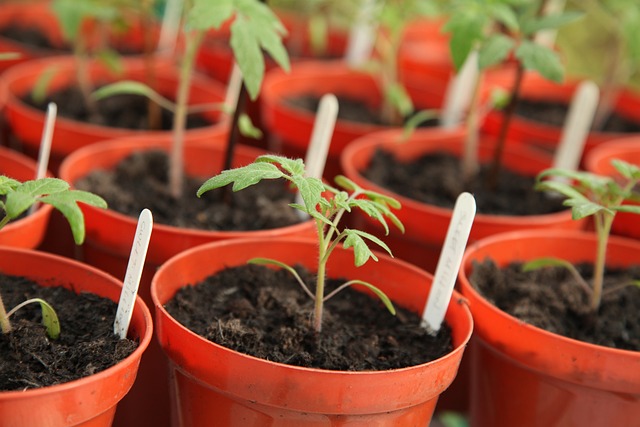
It is not advised to introduce indoor-grown tomato starter plants outdoors all of sudden. This process or procedure is called hardening off. Here the bought or grown indoor starter plants need hardening off the seedlings for a week before planting them into the ground.
Keep them outdoors under shade for some time on the first day. Then gradually increase this time daily slowly introducing them to some direct sunlight. Now the starters are fully ready to be transplanted.
Transplanting Tomatoes
Once the calculated day comes after 2 weeks from the last expected spring frost date, the location is chosen, the soil is made fertile, the climate and temperature have changed in favor of the tomato plants, and the starter plants are ready to be transplanted to the ground can be now planted carefully and firmly to the ground.
When planting, make sure to place tomato stakes and cages which help the produced fruits to stay off the ground helping them avoid diseases and pests. These stakes and cages also help the tomato plants grow upright. As an option, in addition, you can also add some organic tomato fertilizer or bone meal that is rich in phosphorus to the planting holes.
Avoid using nitrogen fertilizers that promote large tomatoes but can delay the flowering and fruiting processes. Pinch away some of the lower leaves before planting so it has a lengthy stem buried underground. This eventually helps grow roots to hold the plant in place firmly. Allow space in-between starters, for the plants to spread out and get enough amount of light.
Watering
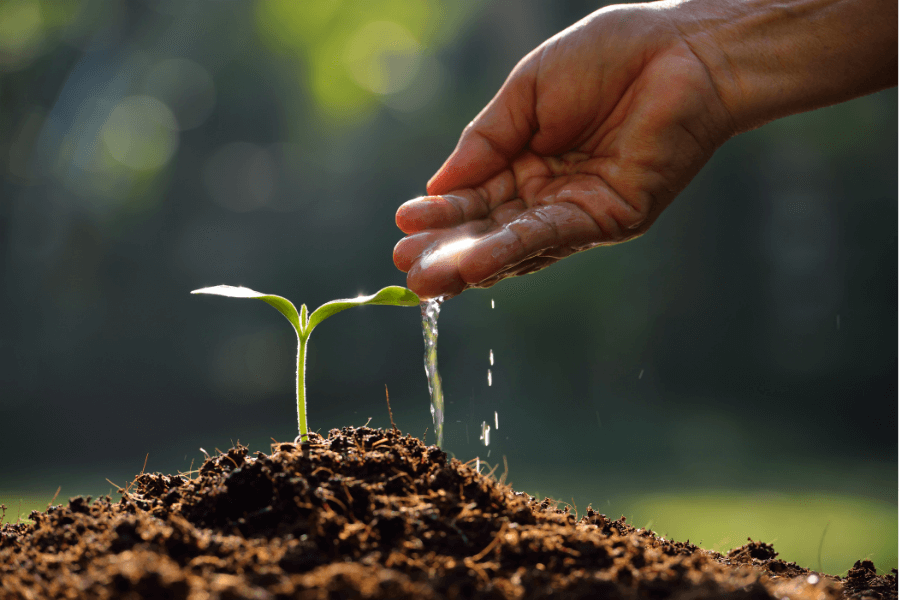
After transplanting we can start watering the plants. Make sure not to disturb the soil and the plant while watering. Plants benefit from morning watering because their roots are shallow the water can be soaked properly without half evaporating in the sun, this moisture is enough to survive a whole hot day.
Water when supplied deeply helps the plant to establish a strong root system. It is very essential to supply more water during the growth phase. Overhead watering causes the water to fall with pressure on the plants. This way of watering should be avoided as it can break or make the plant bend. It can also make the muddy water splash on the leaves and can cause diseases.
Avoid afternoon watering which can increase the temperature of the roots and cause damage. After about 5 weeks you can add 2 to 4 inches of organic mulch such as straw, hay, or bark chips to help retain water. In addition, Mulch also prevents the soil and soil-borne diseases from splashing up on the plants.
If the climate is very hot you can reduce the heat by adding some flat rocks next to each plant. this reduces heat and reduces the water in the soil from evaporating in the sun.
Pruning, Pinching, and Staking
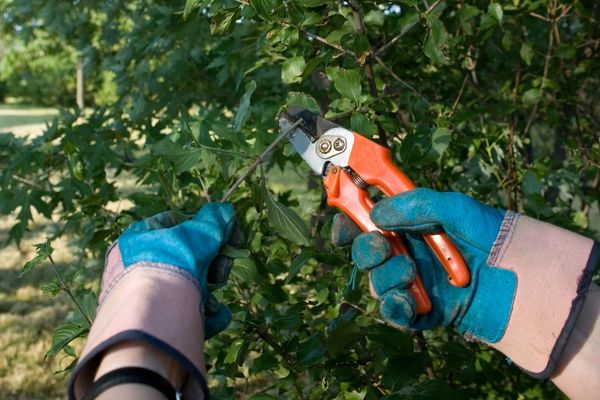
Vining tomato plants grow suckers that have to be pinched off to aid air circulation and allow more sunlight to penetrate the spaces in between. You can also prune a few leaves to let the sun reach the ripening fruits, but remember the leaves are the ones that photosynthesize and create sugars that give flavor to your tomatoes.
To support the plant growth upright you can use pieces of clothing or strings to tie the stem to the stakes and cages. You can also trim the lower leaves which are the oldest. The removal of the oldest leaves cuts off the risk of developing fungal disease and soil-borne pathogens being splashed on them.
For the indeterminate tomato plants, you can pinch off the tips of the main stems in the early summer so that the plant will divert the usage of energy to flower making. You can also do this towards the end of summer when you want the last set of tomatoes to fasten the ripening process.
Time to Harvest
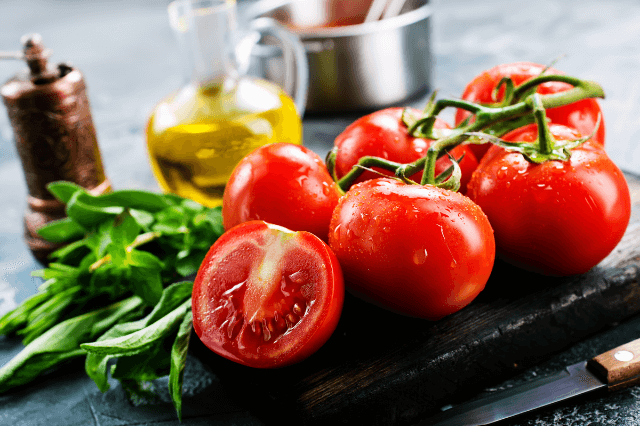
Once you see the red appear on the skin of the tomatoes then it is time to harvest them. Hold the tomato to be plucked on one hand and the stem on the other hand and carefully pluck the tomato without breaking or damaging the plant. It is best to let the tomatoes ripen fully on the plant but in case of emergency, you can pluck them when matured and let them ripen indoors.
FAQs
1. What are the things to consider when choosing transplants?
- It is always better if you could buy tomato plants from a reputable nursery.
- When choosing tomato transplants make sure to go for the young tomato plants.
- Choose the stockiest plants that look healthy and thick-set with dark green leaves. These stockiest plants will also look more upright and have sturdy stems as they are healthy.
- Watch out for plants containing yellow leaves, spots, or stress damage, and also plants that have fruits or flowers starting to appear, and avoid purchasing them.
2. How can you make starter tomato plants from seeds?
First, calculate the day that comes 6 weeks in advance of the last estimated spring frost date in the area you live in. Then start sowing your seeds on that calculated day. Choose small trays in which the seeds can be sown at a depth of ½ inch. The sown seeds will start to germinate and grow into seedlings.
These seedlings are then further grown for 2 more weeks from the spring frost date to ensure the temperature rises making it warmer both day and night. After all 8 weeks of indoor growth now the tomato starter plants grown from the seeds are ready to be planted.
3. How to plant the seedlings?
- Tomato seedlings are fit for transplanting only after they get their first set of true leaves.
- Make sure the seedling is placed deep enough that the leaves at the bottom are just above the surface. This helps the roots grow all along the plant’s stem that was buried underground making the plant hold tightly to the ground without toppling.
- Plant the starter tomatoes 2 to 3 feet apart from each other to ensure they don’t grow in a bunch. Crowded plants will not get enough light from the sun and fruits may not ripen.
- Plant them in fours in compass-point positions to make it easy with watering and fertilizing which can be done using the space in the middle.
4. Can tomato seedlings be grown in winter?
Yes, it can be either grown in greenhouses or indoors under artificial plant lighting. If growing indoors under artificial plant lighting make sure to expose the light for 14 to 18 hours every day. For better results, the young tomato plants should be kept as close as possible to the fluorescent grow lights. Once they are ready to be planted outside choose the sunniest part of your garden.
5. What can be done to make the tomato plant stem stronger?
Let the tomato plants sway and move in the blowing-out air to make stems grow stronger. If growing plants indoors, expose them to an artificial breeze by keeping them under a turned-on fan for 5 to 10 minutes twice daily. Another way to make stems grow stronger is to gently rub your hand back and forth on the tops of the plant for some time.
6. What precautions can reduce the risk of developing diseases and pests?
Growing tomato along with basil, garlic, and onions reduces the risk of getting pests like nematodes. Marigolds also help repel nematodes. Spray tea compost weekly to help reduce the risk of fungal diseases.




